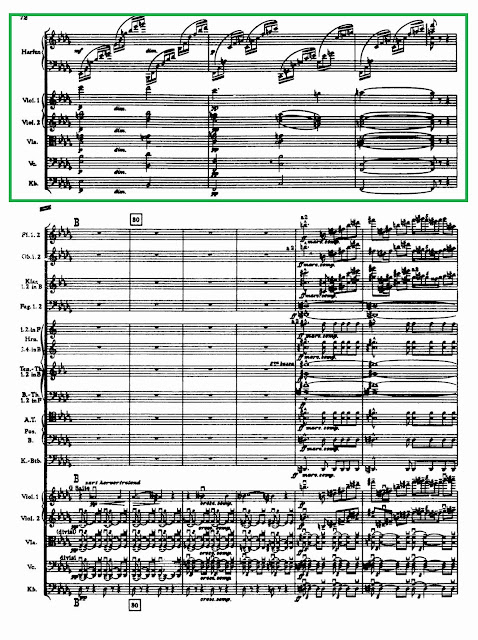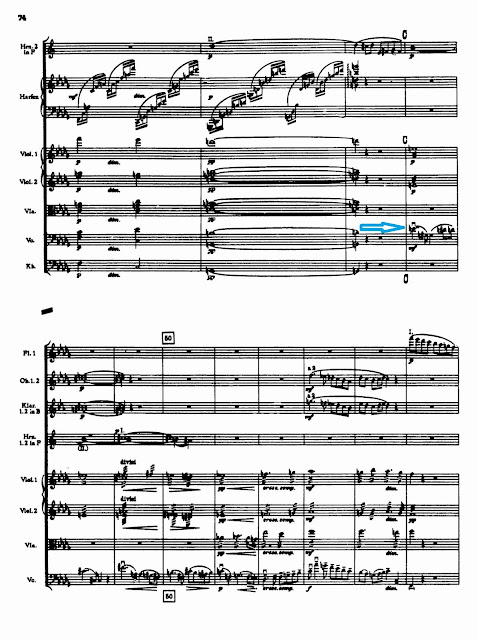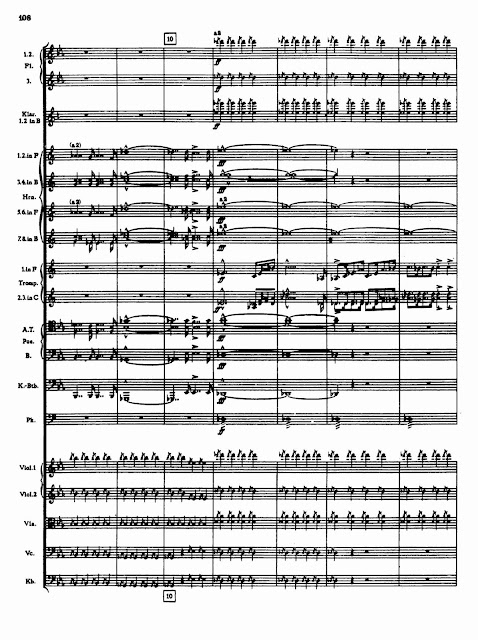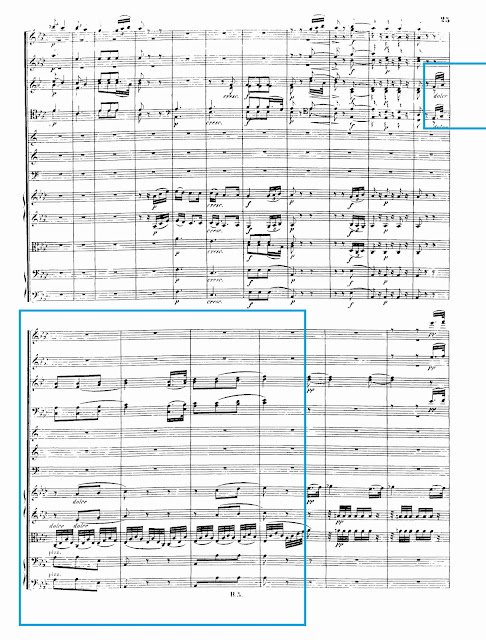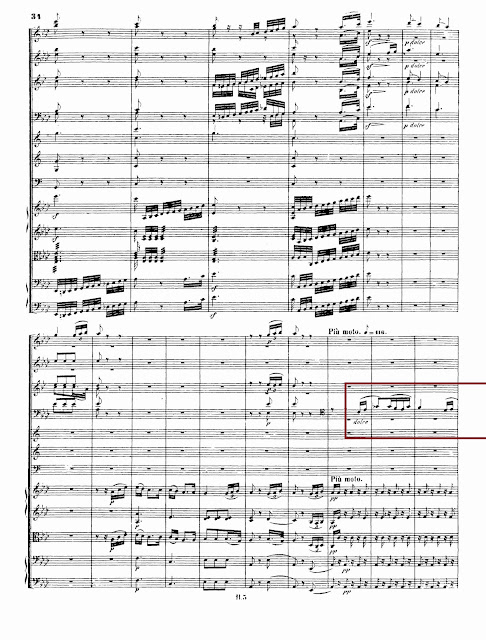CCCLXIII. BEETHOVEN, Ludwig van (1770-1827)
Symphony #5 in C Minor, Op. 67 (1804-08)
1. Allegro con brio
2. Andante con moto
3. Scherzo: Allegro
4. Allegro -- Presto
Concertgebouworkest
Iván Fischer, cond.
(35:15)
With this -- my 363rd post -- I have written about all nine symphonies (#2 in the Liszt transcription for piano -- I'll get to an orchestral version soon) ...
#1: Post LX
#2: Post CCLXVII
#3: Post XXIX
#4: Post CLXXXIV
#5: This post
#6: Post CXV
#7: Post XIV
#8: Post LXXI
#9: Post C
**
This symphony was premiered on December 22, 1808 in a four-hour concert! The all-Beethoven repertoire:
- The Sixth Symphony
- Aria: Ah! perfido, Op. 65
- The Gloria movement of the Mass in C Major
- The Fourth Piano Concerto (played by Beethoven)
- (Intermission) ... can you imagine the line for the Ladies' Room? 😅
- The Fifth Symphony
- The Sanctus and Benedictus movement of the Mass in C Major
- A solo piano improvisation played by Beethoven (did anyone record it?)
- The Choral Fantasy
**
"Radiant beams shoot through this region's deep night, and we become aware of gigantic shadows which, rocking back and forth, close in on us and destroy everything within us except the pain of endless longing -- a longing in which every pleasure that rose up in jubilant tones sinks and succumbs, and only through this pain, which, while consuming all but destroying love, hope, and joy, tries to burst our breasts with full-voiced harmonies of all the passions, we live on and are captivated beholders of the spirits . . . how this wonderful composition, in a climax that climbs on and on, leads the listener imperiously forward into the spirit world of the infinite! No doubt the whole rushes like an ingenious rhapsody past many a man, but the soul of each thoughtful listener is assuredly stirred, deeply and intimately, by a feeling that is none other that unutterable portentous longing, and until the final chord -- indeed, even in the moments that follow it -- he will be powerless to step out of that wondrous spirit realm where grief and joy embrace him in the form of sound."
**
First Movement
Is there a more famous motif in the history of Classical music?
[a tidbit: the letter V in Morse Code is dit-dit-dit-dah!]
Two hundred + years later, and conductors are still arguing about the right approach to these eight notes!
- Giving a heavy weight to the 1/8th-notes, with a long fermata on the half -- as if Beethoven had written Largo instead of Allegro con brio;
- Starting off the with a molto ritardando, not reaching the E-Flat for what seems like minutes; and
- A crisp Allegro and a no-nonsense fermata.
Fischer reads it correctly -- as most see it -- and note that the fermata on the D is just a tad longer than the E-Flat, as it equals four beats and not two ...
[btw, if you've never heard
this, you might get a chuckle or two ...]
As things begin to pick up steam, Beethoven shouts out a full-stop cadence on the dominant-- except the violins keep holding their G! (blue star) ...
Immediately following is a falling diminished seventh (red arrow), giving off a feeling of unease and anticipation.
Another falling diminished chord (blue) leads to modulation to E-Flat Major (vii°⁶/V -- V⁶) in two ff chords (red), followed by a solo horn (green).
The rest of the exposition remains in E-Flat and is soothing and melodious.
But not for long. After the repeat (if it's taken) comes the 1/8-note "fate" motif, followed by constantly shifting harmonies, leading to an explosive repetition of the motif (brown), followed by what sounds like the beginning of a fugal subject (purple):
Of course, a fugue never materializes, but instead Beethoven breaks down the motif, first into two-bar alternating phrases between the winds and strings -- and then one-bar:
Oboe cadenza:
Something new:
Second Movement
A-Flat Major. Two themes, each with their own varations.
Sharply contrasting with the motivic-based first, this movement begins with a glorious melody in the violas and celli, with pizzicato bass accompaniment:
First variation:
Second variation:
Third variation:
Fourth variation:
Second theme with a modulation to C Major for the "fanfare" theme:
now back to the tonic; a variation on the first theme:
The variations continue, and when we arrive at the Coda there is a change of tempo, Più mosso -- played by a solo bassoon:
And back to the slower tempo, Beethoven sings his heart out:
concluding on a series of authentic cadences:
Third Movement
Scherzo and Trio.
Like the first movement, Beethoven pauses the music -- twice!
Then the horns blast out a short-short-short-long motif, reminiscent of the opening of the symphony ...
Yet another femata!
The Scherzo finishes on a hushed cadence -- vii°/IV - IV - V - I.
We move to C Major for the trio, which begins as a fugato in the low strings:
After the repeat, the motif is shortened -- it sounds like someone stopping on a dime:
Beethoven tip-toes (soft pizzicato) back to C Minor and the return of the Scherzo proper:
and again stops everything on two more fermatas:
A long section of repeating 1/4-notes leads to a G pedal point and a giant crescendo which takes us attacca into the
Fourth Movement
in C Major and sounding V for Victorious!
New theme:
New theme -- G Major:
(notice that this new theme is also short-short-short-long!)
A next theme (still in G Major) is presented first in delicious piano orchestration with winds and strings:
and then full orchestra:
The entire exposition is repeated (or it should be!) and the development section begins in A Major, with the S-S-S-L motif in triplets in the flutes and violins:
A massive crescendo leads to the initial 3/4 theme. Notice the delicate orchestration:
which gradually returns us to the main theme:
Beethoven's sense of humor emerges. What sounds like a final cadence, is interrupted by a solo bassoon and horn!
and he does it yet again, this time introducing a brand new theme in cut tempo:
and a long vigorous ending featuring V-I cadences and a long series of C Major chords which brings things to powerful close:











